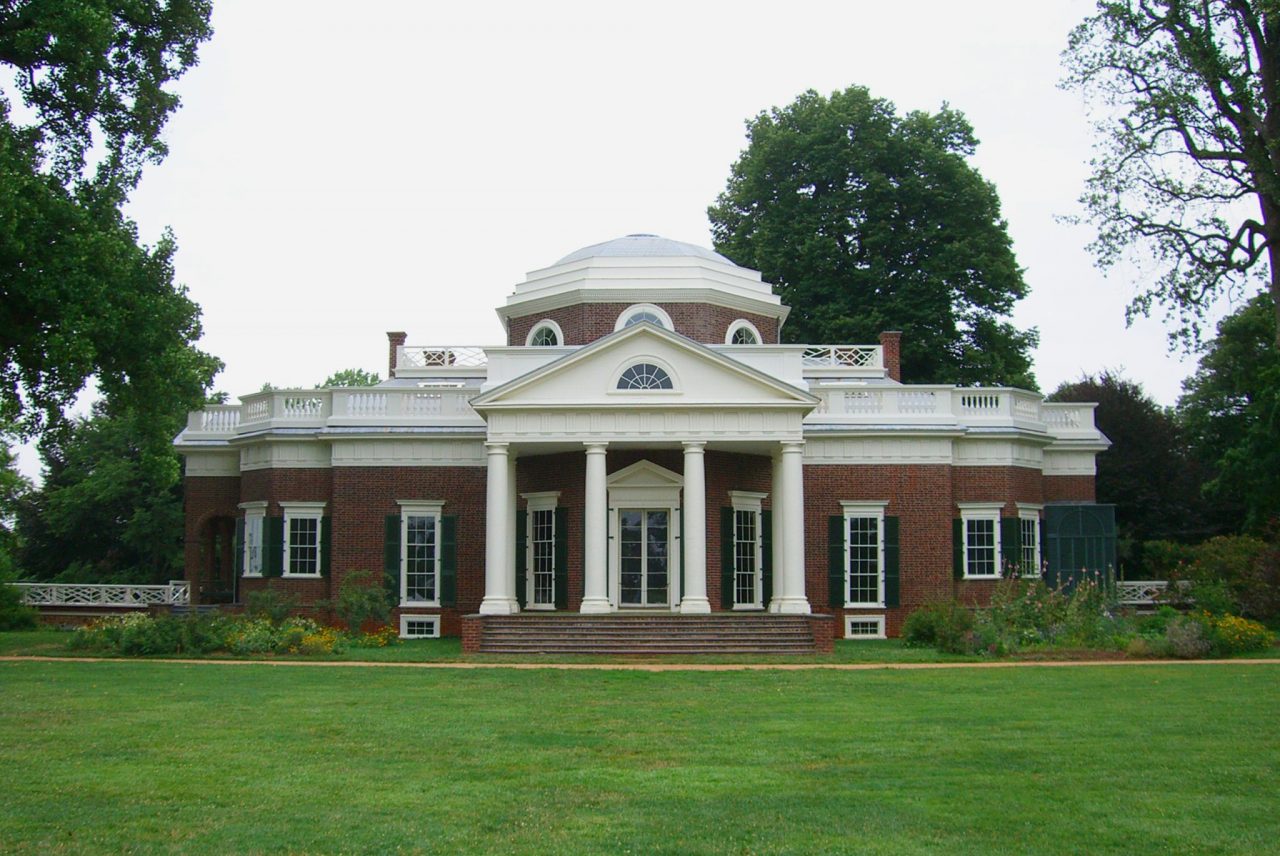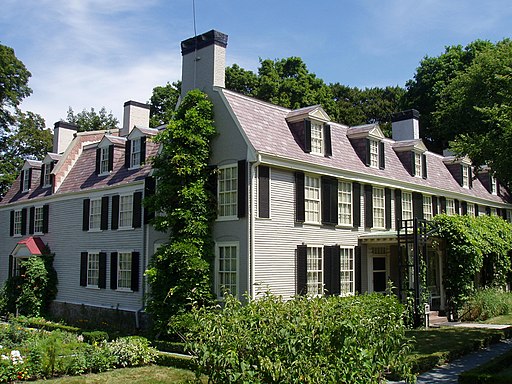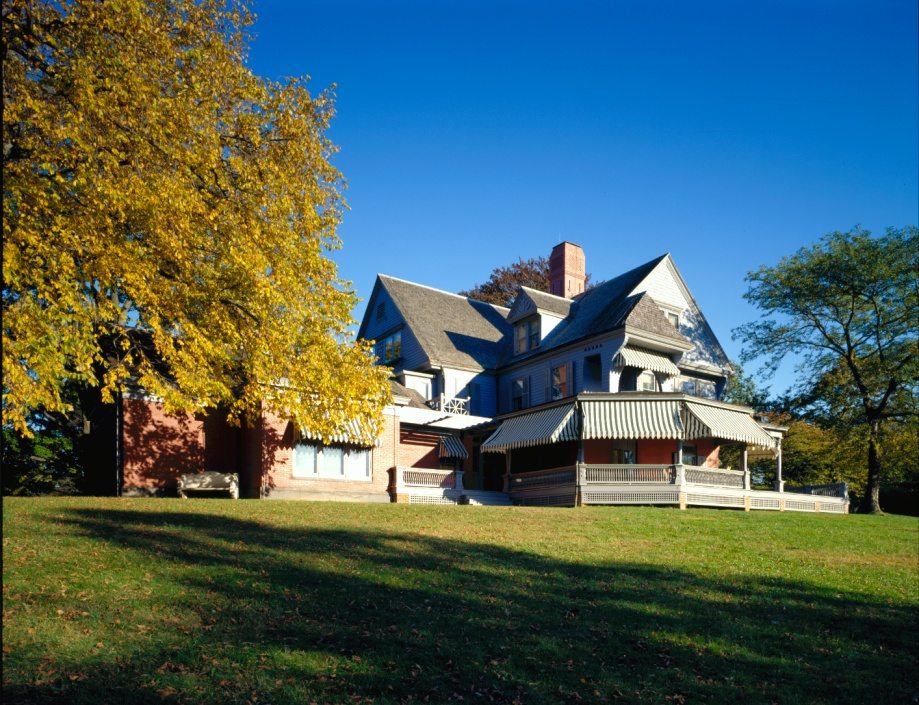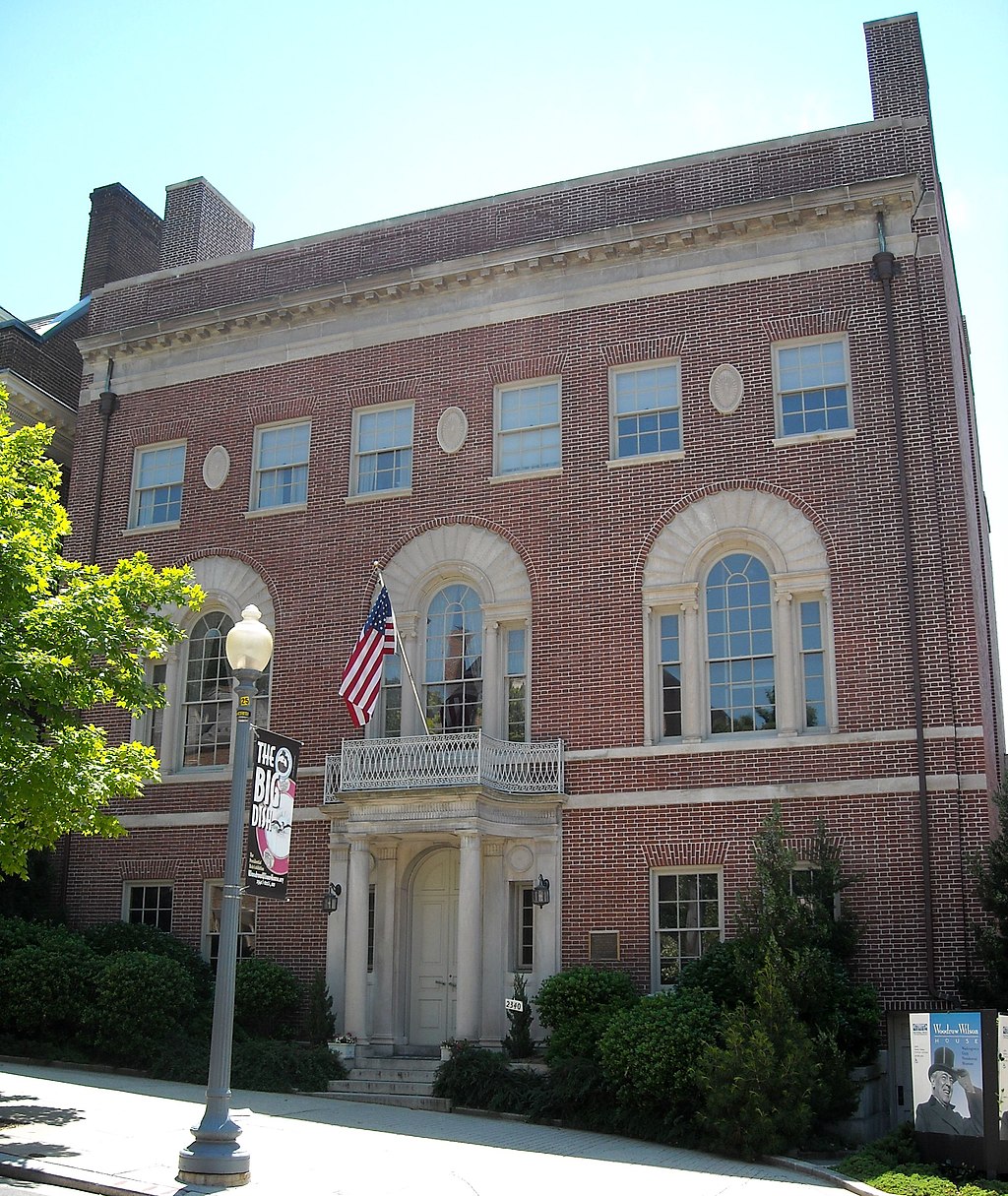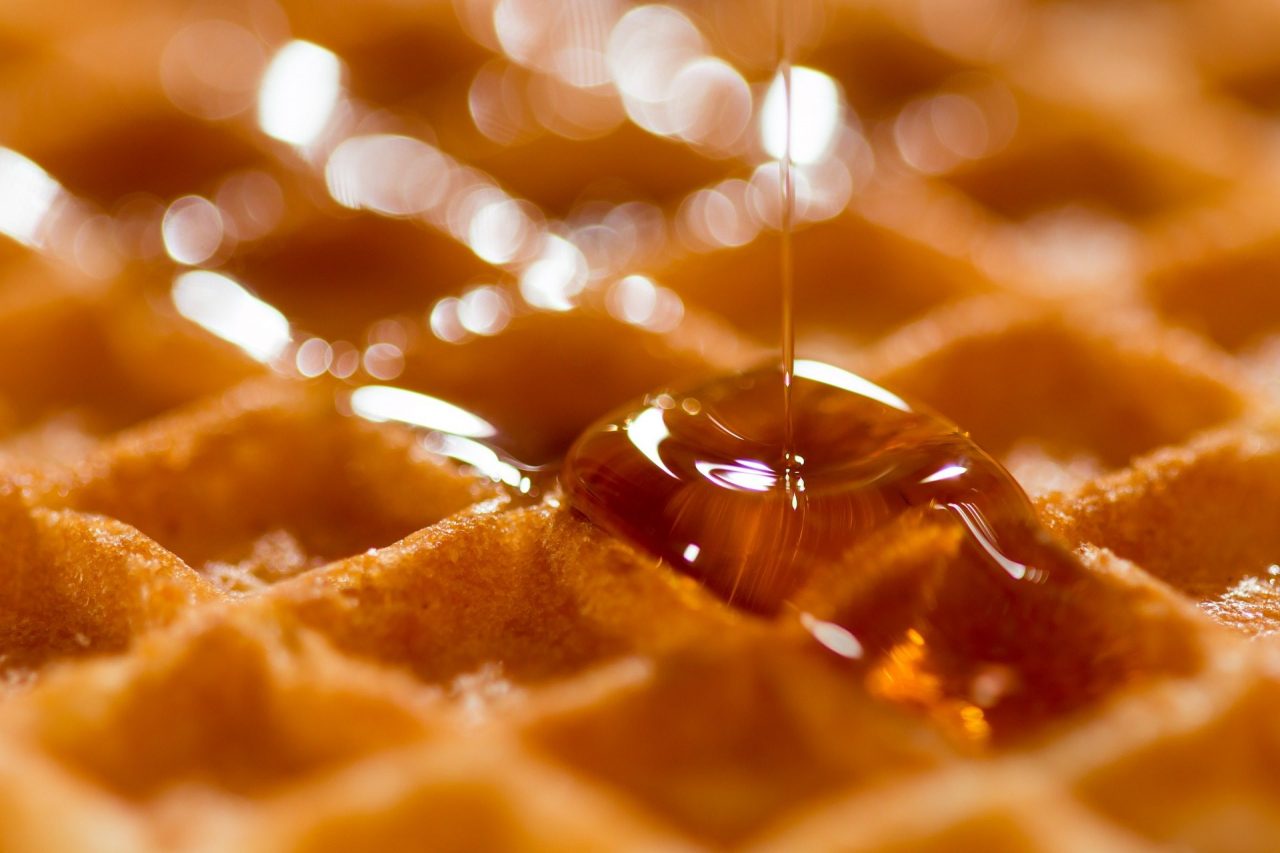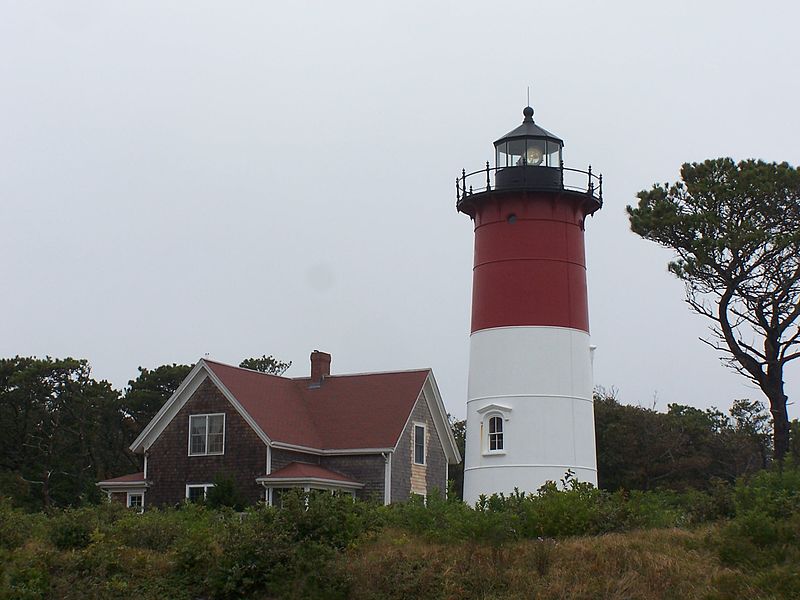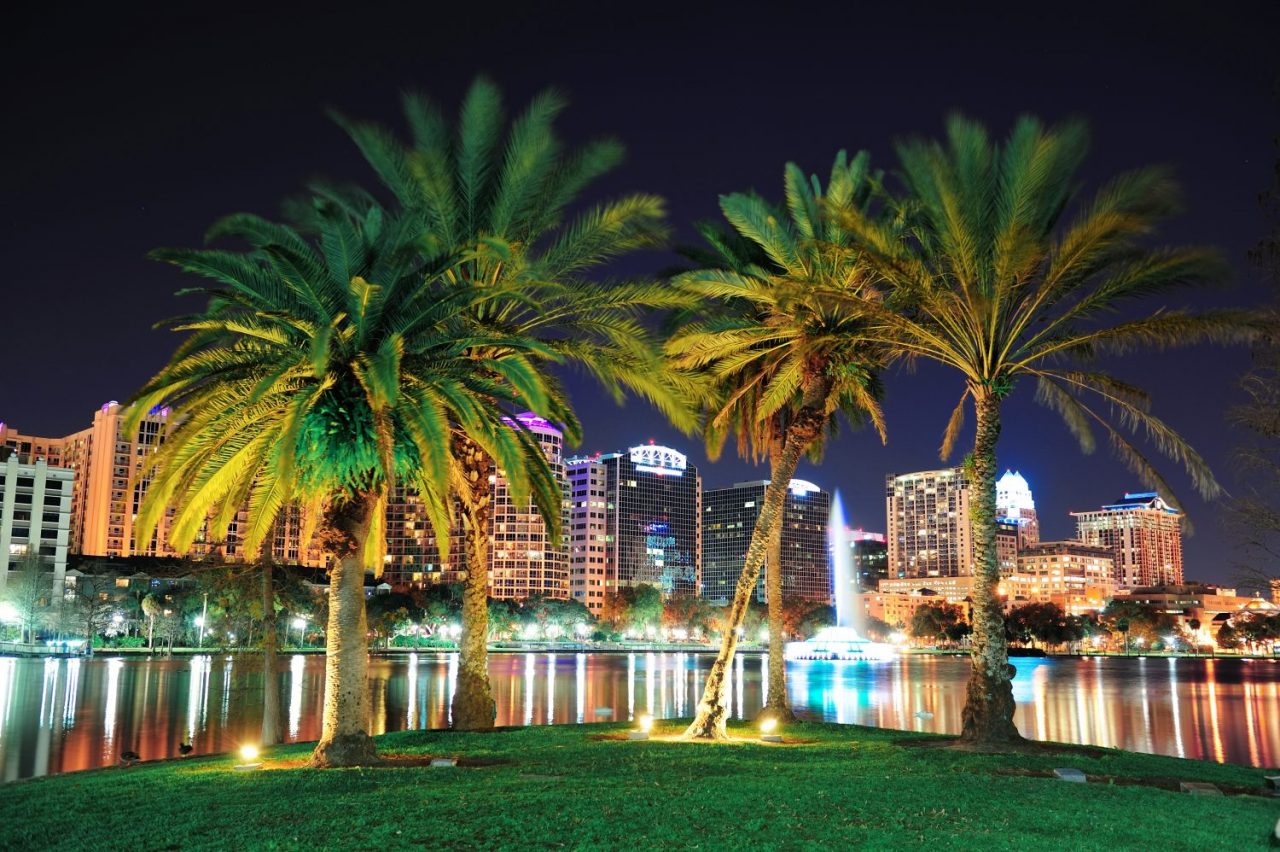This is the month in which we celebrate Presidents Day, due to the fact that both Washington and Lincoln’s birthdays are in February. When you drive the nation, you have many opportunities to visit presidential homes, from the most famous to the somewhat obscure. Here are some favorites:
Mount Vernon (Virginia)
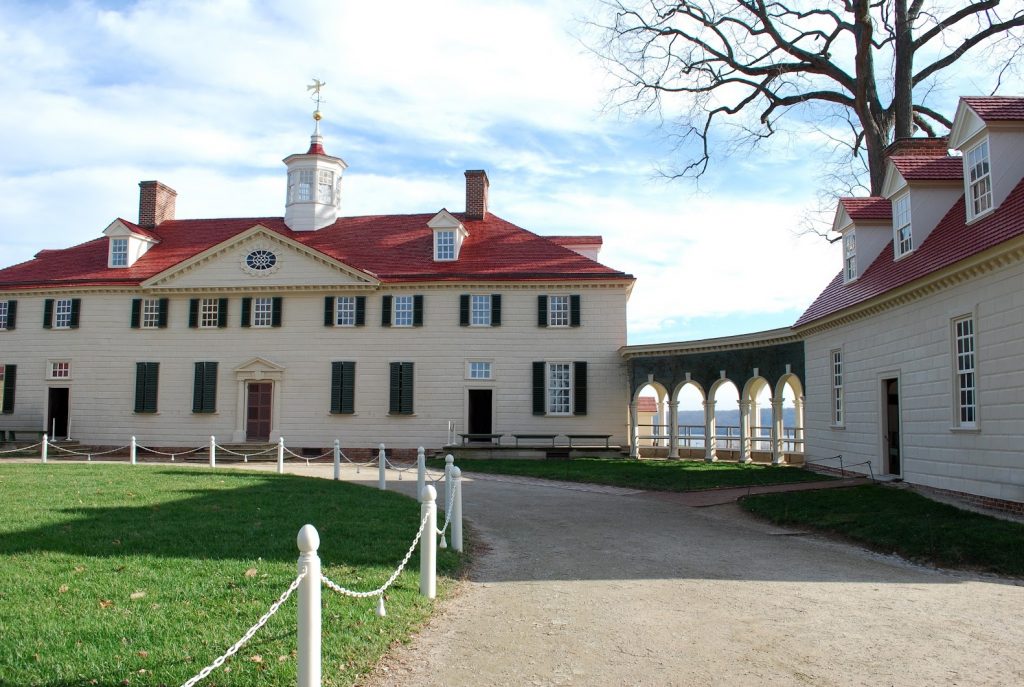 Mount Vernon, Home of President George Washington, is one of those essential places for every American to visit. Much beloved by our first President, the house and surrounding property are situated alongside the Potomac River. On the square-columned Piazza on the river side of the house, the lawn slopes away to the river, a setting that is lovely in every season. The mansion has undergone painstaking renovations inside and out, with the result that the exterior is not the white color it has been for more than a century, but rather a taupe tone resembling sandstone. Inside, the rooms are evocative of the Washington family and their many celebrated guests. Be sure to see the Key to the Bastille, presented by the Marquise de Lafayette. Visit the extensive gardens and stroll down to the final resting place of George and Martha.
Mount Vernon, Home of President George Washington, is one of those essential places for every American to visit. Much beloved by our first President, the house and surrounding property are situated alongside the Potomac River. On the square-columned Piazza on the river side of the house, the lawn slopes away to the river, a setting that is lovely in every season. The mansion has undergone painstaking renovations inside and out, with the result that the exterior is not the white color it has been for more than a century, but rather a taupe tone resembling sandstone. Inside, the rooms are evocative of the Washington family and their many celebrated guests. Be sure to see the Key to the Bastille, presented by the Marquise de Lafayette. Visit the extensive gardens and stroll down to the final resting place of George and Martha.
Wheatland (Pennsylvania)
Wheatland, Home of President James Buchanan is situated in a sylvan setting in the city of Lancaster, Pennsylvania. The house is built of warm red brick with porches and details in white. Buchanan was our only bachelor President and so his niece Harriett Lane was hostess here as well as at the White House during his tenure. Many delights are to be found inside including a gigantic porcelain fishbowl, a gift from the Emperor of Japan. Be sure to visit the Lancaster County Historical Society next door, and if you wish, drive out to Woodward Hill Cemetery to visit Buchanan’s grave. While in Lancaster, time your visit so that you can go to the Central Market on market day.The Lincoln Home (Illinois)
The Lincoln Home in Springfield, Illinois, was home to Abraham and Mary Todd Lincoln and their family until they went to Washington. Lincoln gave a parting speech to his friends and well wishers from the second floor of the house and indicated in it his uncertainty if he would ever return. Sadly, his assassination assured that he would not. Beautifully restored, the modest home offers many insights about that bygone era. The only access to the Lincoln Home is with a free ticket for a specific tour time. Free tickets and site orientation are provided at the Visitor Center Information Desk. While in Springfield, be sure to see the Dana-Thomas House by Frank Lloyd Wright.Adams National Historical Park (Massachusetts)
Adams National Historical Park in Quincy (Boston), Massachusetts is the home to two US Presidents, father and son, John Adams and John Quincy Adams. The cluster of homes and outbuildings tell the story of these celebrated men, and their family. One is impressed by the simplicity of their lives, and the sold sturdy New England values that the historical park presents to visitors. Take the trolley tour from Quincy Center to the old Quincy houses on Franklin Street and onward to Peacefield, the Presidential Summer House. Be sure to see the 1870 Stone Library which his home to John Quincy Adams’ 14,000 books.Monticello (Virginia)
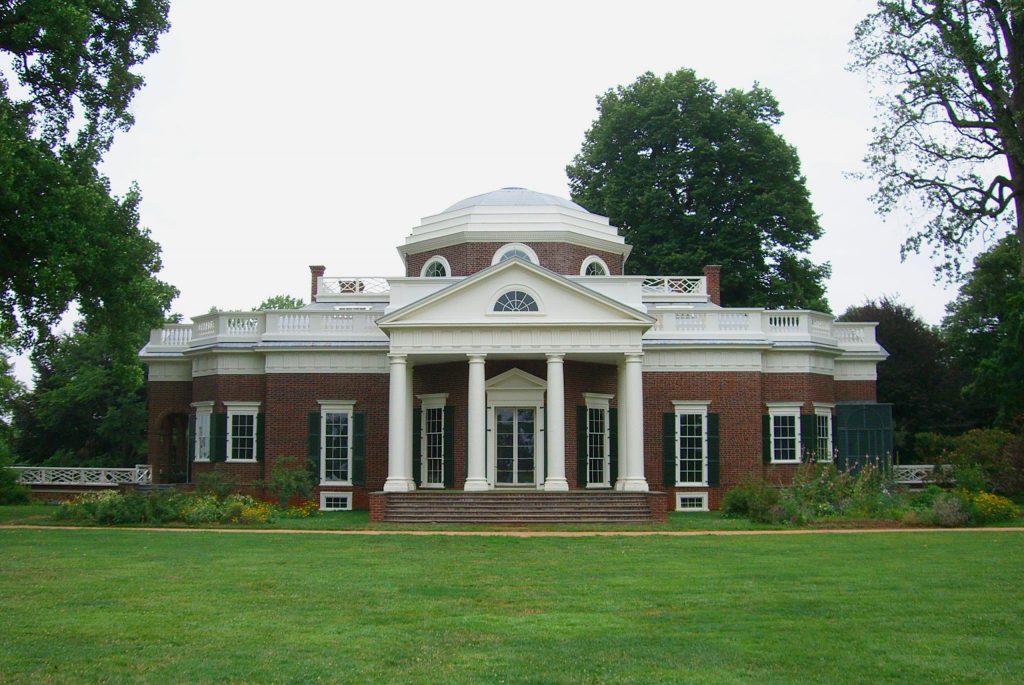 Monticello, or “Little Mountain” is the inspiring dwelling designed by and beloved of our third President and author of the Declaration of Independence, Thomas Jefferson. Jefferson designed it incorporating ideas of the Italian Renaissance, especially the work of the famed architect Andrea Palladio. To find an American version of a Renaissance villa high about Charlottesville is impressive enough, but inside, there are many innovations from Jefferson, from a clock run by suspended cannon balls, to his alcove bed allowing him to retire and arise from either of two rooms. While at Monticello, be sure to visit The University of Virginia in Charlottesville, for more fine architecture from Thomas Jefferson.
Monticello, or “Little Mountain” is the inspiring dwelling designed by and beloved of our third President and author of the Declaration of Independence, Thomas Jefferson. Jefferson designed it incorporating ideas of the Italian Renaissance, especially the work of the famed architect Andrea Palladio. To find an American version of a Renaissance villa high about Charlottesville is impressive enough, but inside, there are many innovations from Jefferson, from a clock run by suspended cannon balls, to his alcove bed allowing him to retire and arise from either of two rooms. While at Monticello, be sure to visit The University of Virginia in Charlottesville, for more fine architecture from Thomas Jefferson.
Springwood (New York)
 Springwood, is the name of The Franklin Delano Roosevelt Home at Hyde Park, New York. FDR grew up in this home, though it looked rather different in his day. The transformation from Italianate villa to neoclassical took place in Roosevelt’s adulthood. Mother Sara Roosevelt held forth on the verandah while entertaining British Royalty and a who’s who of other dignitaries. Roosevelt delivered his presidential victory speeches from the terrace of the mansion. The living room and library give you a sense of what it was like when the President relaxed at home working on his stamp collection. Franklin and Eleanor Roosevelt are buried in the garden near the sundial, as is their favorite dog, Fala. Be sure to also visit Eleanor’s personal retreat, Val-Kill Cottage.
Springwood, is the name of The Franklin Delano Roosevelt Home at Hyde Park, New York. FDR grew up in this home, though it looked rather different in his day. The transformation from Italianate villa to neoclassical took place in Roosevelt’s adulthood. Mother Sara Roosevelt held forth on the verandah while entertaining British Royalty and a who’s who of other dignitaries. Roosevelt delivered his presidential victory speeches from the terrace of the mansion. The living room and library give you a sense of what it was like when the President relaxed at home working on his stamp collection. Franklin and Eleanor Roosevelt are buried in the garden near the sundial, as is their favorite dog, Fala. Be sure to also visit Eleanor’s personal retreat, Val-Kill Cottage.
Sagamore Hill (New York)
Sagamore Hill, at Oyster Bay on Long Island, New York, is the home of the other Roosevelt, Teddy, and the big gabled house still seems to echo with the sounds of laughter of his large and boisterous family as well as his own oversized personality. You almost expect him to greet you at the door with a resounding “Delighted!” or “Bully!”. The home served as the summer White House in the years when Theodore Roosevelt was President, (1902–1908). Almost all of the furnishings in the main house are original. Also visit the Theodore Roosevelt Museum, in a 1938 house named “Old Orchard”, which was once the home of Brigadier General Theodore Roosevelt, Jr.
Woodrow Wilson House (Washington, D.C.)
2340 S Street NW, near the Embassy Row section of Washington D.C., is the setting for the Woodrow Wilson House, the home to which Woodrow Wilson and his second wife Edith Bolling Galt, retired after his terms in the White House. Wilson was ailing, still suffering the effects of the massive stroke that occurred while he was President. With its lovely triple Palladian windows and gracious entry porch, the red brick and limestone structure is restrained and dignified. The house is a gracious reminder of the gracious age of the post WWI era, and is preserved as it was when Mrs. Wilson died in 1961. President Wilson gave his last public speech from the balcony over the front door, in 1923.
Rapidan Camp (Virginia)

By The original uploader was Wallygva at English Wikipedia – Transferred from en.wikipedia to Commons., CC BY 2.5
If you like hiking and roughing it a bit, then why not visit the presidential getaway that preceded Camp David, that is the President Herbert and Lou Henry Hoover Rapidan Camp in the mountains of Virginia. Situated in the Shenandoah National Park, you can head down the Appalachian Trail to Mill Prong Trail and visit the cluster of rustic buildings that make up this historic US presidential haven. Camp Hoover is a remote, soothing retreat, located at the headwaters of the Rapidan River. There are also daily van trips to the camp.
Coolidge Homestead (Vermont)
President Calvin Coolidge State Historic Site, Plymouth, Vermont. In addition to the house in which Coolidge was born, the site includes an old church, a cheese shop, a general store, and other historic buildings. Really, a small, beautifully preserved Vermont village, filled with period items. See the spot where President Coolidge’s father, a judge, administered to his son the Presidential oath of office, as he succeeded to the presidency upon the death of Warren G. Harding. Allow at least two hours for the self guided tour.

